Idaho is nicknamed “the gem state,” and gem and mineral treasures abound in its varied landscape of mountain ranges, canyons, grassy valleys, plains, and far-reaching lowlands. The climate varies throughout the state along with the changes in the geography, but no matter where you live, you can grow a fragrant flower garden to enhance the wonder of your Idaho landscape. The tulip is a different type of gem growing in Idaho, a flowering spring gem. Read on to discover 3 types of tulips to grow in Idaho, how to plant and care for them, and more!
3 Tulips Types that Grow Well in Idaho
Tulips come in a stunning array of hues and variations. In fact, there are now over 3,000 tulip varieties to choose from! With such a vast selection, thinking of these by their type is helpful. Tulips fall into 15 types based on their flower shape, heritage, and blooming period. Idaho features various climates where almost any tulip can thrive in, but we’ll discuss 3 types to get you started on your tulip cultivation journey. All the tulips featured here have sturdy stems that give the plants resilience to wind, rain, and other stressors.
Single Early Tulips
Single Early tulip varieties are some of the earliest to bloom, generally reaching their glorious, colorful potential in early to mid-spring. As they open in the still-cooler temperatures of spring, their blooms will often last longer than those of other tulip types. They generally reach 10-18 inches in height, and this lower profile can blend brilliantly with some of the taller tulip varieties. These tulips are part of an adaptable, easy-to-grow group and do well in beds, along borders, and in containers as long as they’re protected from freezing. Single Early tulip varieties are also an excellent choice for forcing indoors during winter.
‘Beauty Queen’ is a particularly lovely and fragrant variety with salmon-hued petals that give way to delicate rose feathering at the tips. Try out the ‘Fire Queen’ for a tulip with rich, red and orange flame-like petals
Triumph Tulips
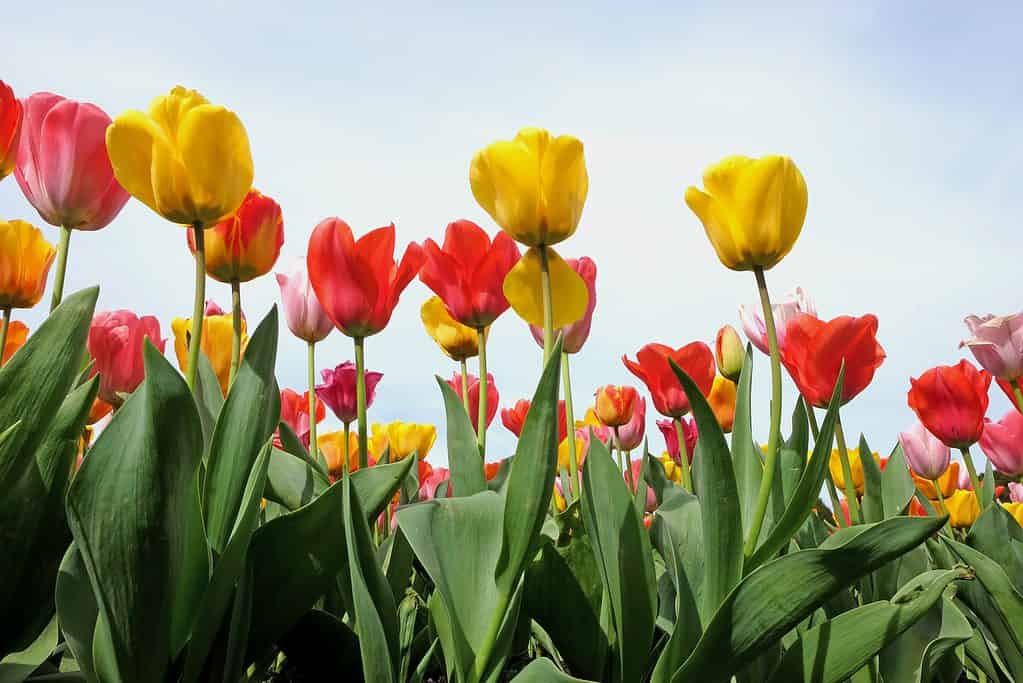
It’s easy for Triumph tulips to grow in Idaho.
©Alex Manders/Shutterstock.com
Early and late blooming tulip varieties were crossed to create the mid-season blooming Triumph Tulips, which live up to their name as an achievement in tulip cultivation. Triumphs feature a single bloom atop a strong, medium-length stem that reaches 16-20 inches tall. Their blooms vary widely, with some varieties growing compact blooms and others displaying long, flared petals. Triumph varieties are excellent for indoor forcing or planting in beds outdoors in all regions of Idaho. They can do well in containers if they’re protected from freezing in colder regions.
This is the largest tulip group with the widest range of colors and styles to choose from. Pick from a rainbow of hues, stripes, and flame patterns. Try out ‘Rembrandt’s Favorite’ for a burgundy bloom “painted” with white streaks or ‘Jan Reus’ for a deep, dark red. The ‘Dreaming Maid’ is a whimsical violet-hued beauty that fades into faint white edges.
Single Late Tulips

Single late tulips bloom late in the spring.
©Sergey V Kalyakin/Shutterstock.com
As their name implies, Single Lates are a group that tends to bloom late in the spring. These are tall-stemmed, usually reaching 24 inches tall or higher. Their sturdy stems end in colorful goblet-shaped flowers in a variety of stunning hues.
‘Queen of the Night’ is a particularly potent choice with dramatically dark purple petals that can really stand out among the lighter shades of spring. ‘Cafe Noir’ is a similar variety that reaches a deep shade of maroon. ‘Sorbet’ is a show-stopping tulip with creamy white petals streaked with red, and ‘Hocus Pocus’ shines like a candle’s flame. Plant Single Lates and you’ll have tulips gracing your Idaho garden late into the growing season.
Are Tulips Annuals or Perennials?
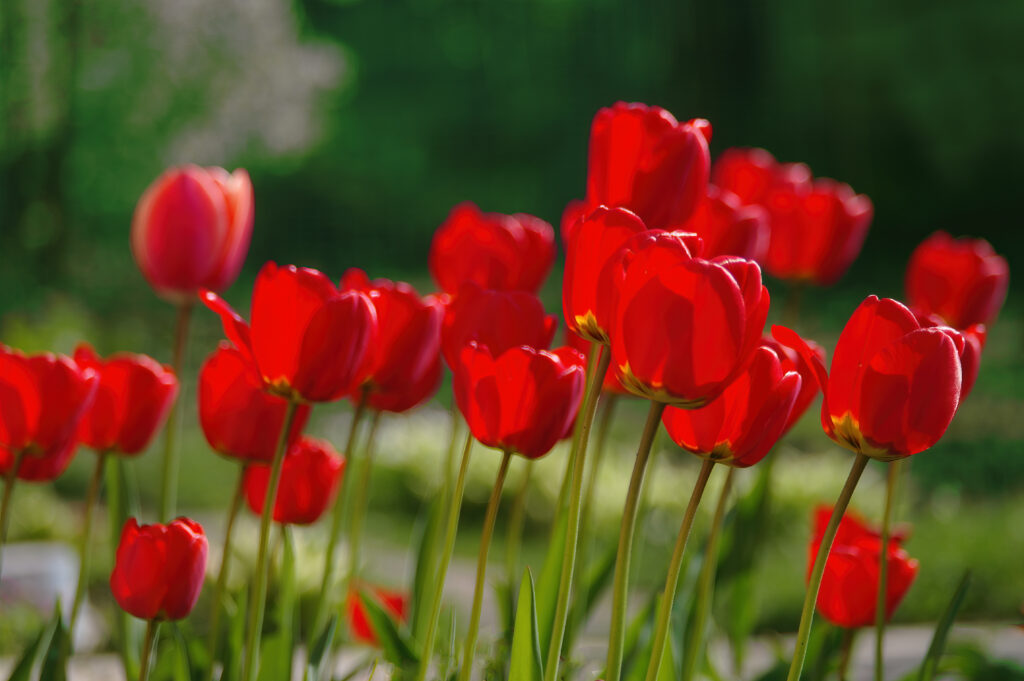
No matter what tulip you plant, it will add a lovely splash of color to your garden or yard.
©iStock.com/Haidamac
When planning your garden, you may want to know which flowers are annuals and which are perennials. Annuals burst forth from the soil for a brilliant one-and-done performance, while perennials have a repeat performance the following year. Perennial bulbs will often multiply underground and come back for many years.
Tulips are native to central Asia, growing wild year after year among the valleys, steppes, and mountainsides. The climate that these early tulips were adapted to was arid or semi-arid, with cold winters and dry summers, receiving rainfall in the spring. Tulips are perennials, but they’ve been cultivated over time, and some hybridized species usually act as annuals. Growing tulips as annuals is more successful in some climates, and some gardeners prefer to grow them as annuals. In Idaho, you can try to perennialize yours or plant new bulbs each year.
Forcing Indoor Tulip Blooms in Any Season
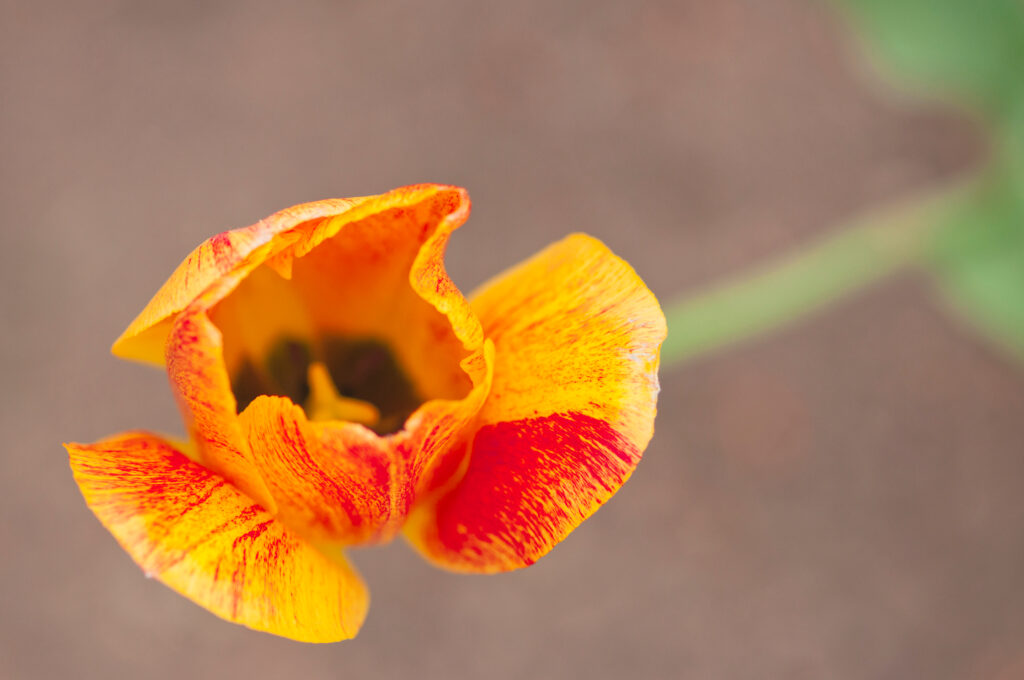
You may even be able to grow these flowers indoors.
©Liviu Gherman/Shutterstock.com
Before discussing how to plant tulips outdoors in Idaho, we’ll consider indoor planting for those that want their spring bulbs to brighten their home and bloom in the depths of winter. To bloom properly, tulip bulbs need to experience a substantial cold period. Their time spent in the cold soil initiates proper flower formation and healthy root growth. If you want to force tulips to bloom indoors out of season, you’ll need to buy pre-chilled bulbs or follow these instructions for chilling bulbs before planting indoors.
To chill tulip bulbs before forcing them to bloom indoors, you’ll want to keep them cold for 10-14 weeks. If the season permits, you may place them outdoors, but if the weather’s warm, you’ll want to store them in your fridge. Put the bulbs in a ventilated bag or egg carton, and be sure to store them away from any fruit. Ethylene gas is released by ripening fruit and will prevent the bulbs from properly developing. Once the chilling period is complete, bring the bulbs straight to your planting container. Fill a well-draining container with quality soil up to about 3-4 inches from the rim. Place the bulbs just on top of the soil and then fill with soil to the top. Keep the potted tulips in a cool, dark area and water lightly about once a week until leaves appear. Now is the time to let them shine! Give them a home somewhere with bright but indirect light and watch for blooms in 2-3 weeks.
When to Plant Tulips in Idaho
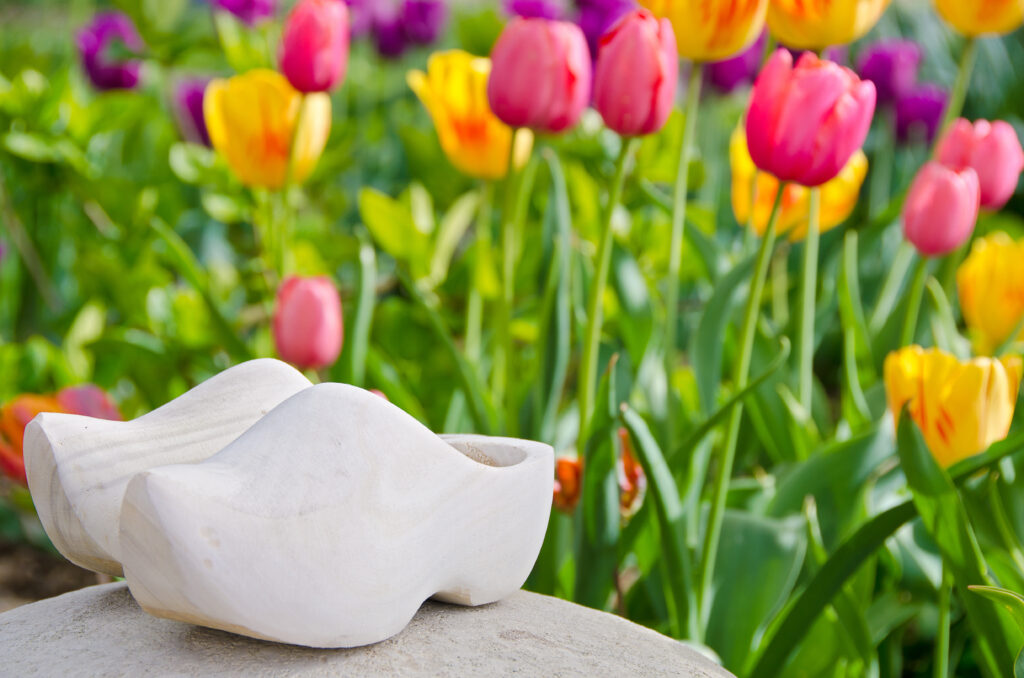
When is the best time to plant tulips? It depends on your zone.
©iStock.com/liveslow
Planting times for tulips will depend on your growing region. Check out the USDA Hardiness Zones Map to determine the zone designated to your area. Idaho has a range of zones from 3-7. Most varieties of tulips will grow well in these climates. The best time to plant your tulips is in the fall when the soil temperatures have dropped below 60 degrees and 6-8 weeks before a ground-freezing frost is predicted for your region.
Paying attention to the soil temperatures and predicted first real freeze will be the best determination for when to plant your tulip bulbs. This will probably be sometime between late September to October in the coldest climates of Idaho that fall within zones 3-4. If you live in zones 5-7, you’ll likely be planting from October to early November.
How to Grow Tulips in Idaho
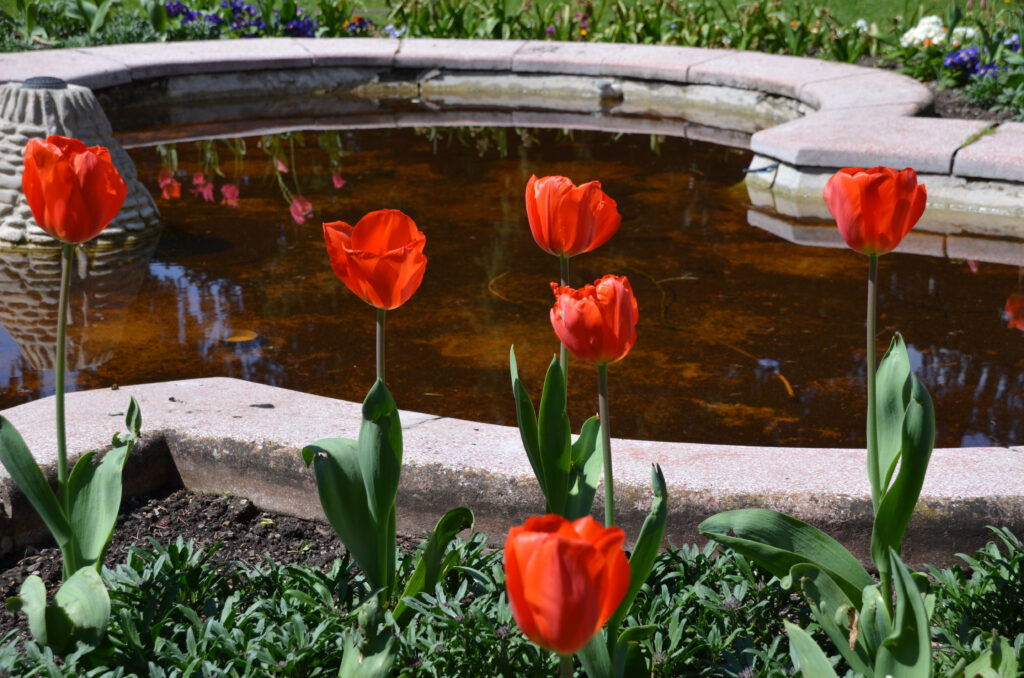
Your tulips will thrive in sunlight.
©iStock.com/Otaliruna
Tulips thrive in areas that receive full sunlight. Plant your tulips in cool, well-draining soil about 6-8 inches deep. Space the bulbs about 3-8 inches apart for larger bulbs and give 1-3 inches between smaller bulbs. Add in organic material like peat moss if your soil isn’t well-draining. Fertilize the bulbs at planting time and again in the spring with a low-nitrogen fertilizer. You can use a spring-bulb-specific fertilizer, mature cow manure, or aged compost. Add a mulch layer of 2-3 inches to keep bulbs moist and cool in the soil. Water your tulip bulbs after planting and continue to keep the soil moist but not soggy until spring. Although the bulbs lie somewhat dormant in the soil, root development is underway, and moisture is important. Just be aware that overwatering can cause a host of problems for tulip development.
When do Tulips Bloom in Idaho?
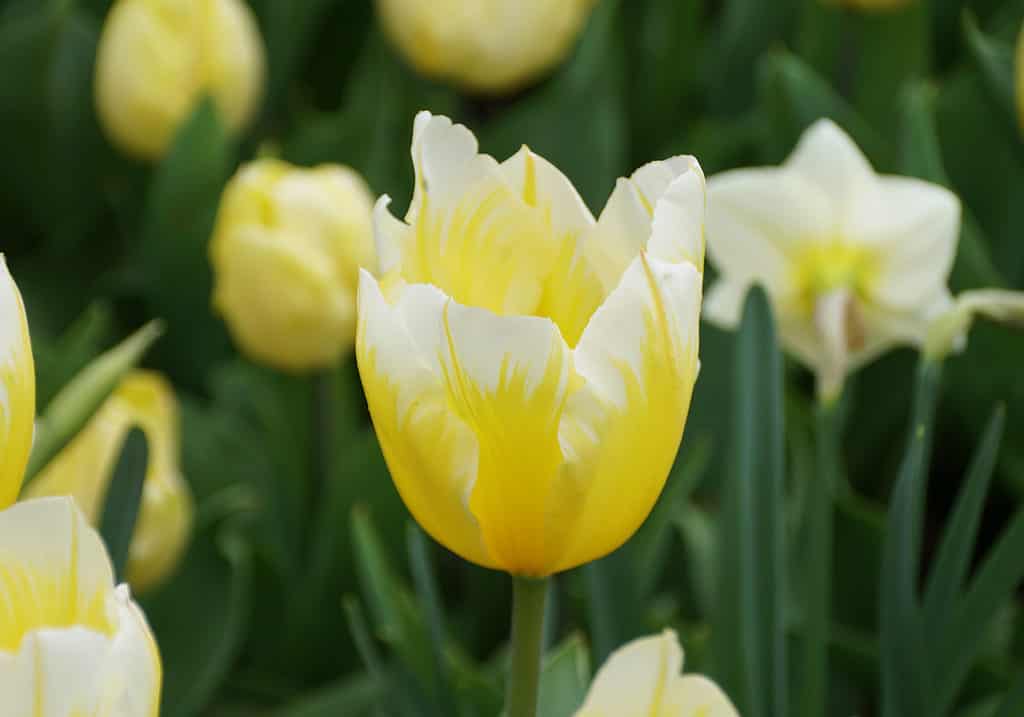
Tulips bloom in the spring.
©Khairil Azhar Junos/Shutterstock.com
Tulips are spring bulbs, meaning that they bloom sometime in the spring. Whether they’ll appear early on, just after the winter has thawed, or late into the season as summer approaches will depend mainly on the type of tulip. Location will also be a factor, with some climates pushing earlier blooms than others. Single Early tulips live up to their name with early spring blooms, while late tulips will bloom at the latest point in the season. Triumph tulips feature mid-spring blooms. Expect each beautiful tulip bloom to last 1-3 weeks.
After your tulips have delighted your senses for the season, you’ll want to dig them up and compost them if you treat them as annuals. Otherwise, once the blooms start to wilt, you’ll want to clip off the flower heads. Let the foliage grow as the plant will produce energy for the following year. After the foliage turns yellow and wilts completely, you can pull it off by hand or clip it back.
Final Thoughts
This has been an overview of everything that gardeners in Idaho need to know for spring tulip blooms that are healthy and vibrant. While we’ve discussed 3 types to get you started, don’t let those limit you, and feel free to experiment with any of the other tulip groups that inspire you! Plant those unassuming bulbs in the chill of autumn, wait through a cold winter, and watch the magic as your hard work pays off in a display of shades, shapes, and scents of spring.
The photo featured at the top of this post is © Sergey V Kalyakin/Shutterstock.com
Thank you for reading! Have some feedback for us? Contact the AZ Animals editorial team.






